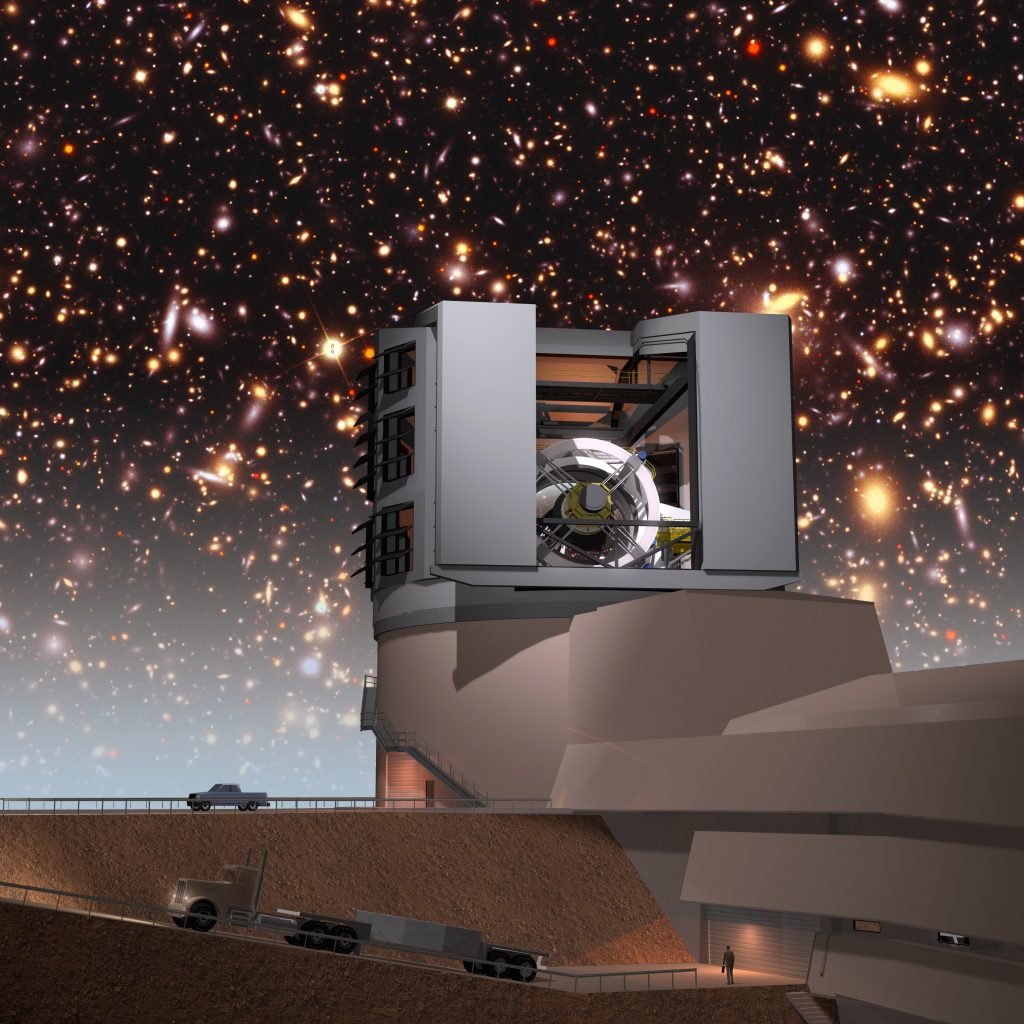
The JHI is pleased to announce it’s involved with the Large Synoptic Survey Telescope UK Consortium.
The LSST will be an exciting facility that will make possible a wide range of studies. Here at UCLan within the JHI we are coordinating the UK effort at using LSST to understand the formation of the centre of our home galaxy, the Milky Way.
It will achieve first light in 2020 and its main sky survey will begin in 2022. The scale of the technical challenges involved in storing and analyzing LSST’s data are daunting, and researchers are already heavily engaged on the project
The LSST (http://lsst.org/lsst/public) will be sited at Cerro Pachón in the Chilean Andes at an altitude of 2715m. The primary mirror diameter is 8.4m, making it one of the largest single telescopes in the world. It also contains secondary and tertiary mirrors with diameters of 3.4m and 5.2m respectively. It will contain the world’s largest digital camera, comprising 3.2 billion pixels (3200 Mpix) in a circular array of 189 detectors. The size of the camera detector is 63cm across. It will generate 30 Terabytes (30,000 Gb) of data every night.
When it starts operating, it will generate one of the largest scientific datasets in the world. The LSST is a ‘synoptic’ survey because it will form an overall view of the universe: billions of objects will be imaged in six colours, spanning a volume of the universe that is larger than any previously explored.
Dr Debattista said: “What is unique about LSST is that each of its images covers a large area of sky to a depth that captures faint objects, and that it takes these images really quickly. That combination of area, depth and speed means that we can do lots of different science with the same dataset.”
“LSST will build up a very detailed map of billions of galaxies, with approximate distances to each, from which we will learn about the mysterious dark energy that seems to be accelerating the expansion of the Universe. But, equally, it will look for changes in the sky from night to night; both moving objects, like asteroids, and new ones, like supernovae, that appear where nothing had been seen before. Covering each patch of sky more than 800 times during its decade of operations, it will construct our first motion picture of the universe.”
See more on this story on the UCLan website.
Featured image: An artists impression of the LSST. Source gallery.
